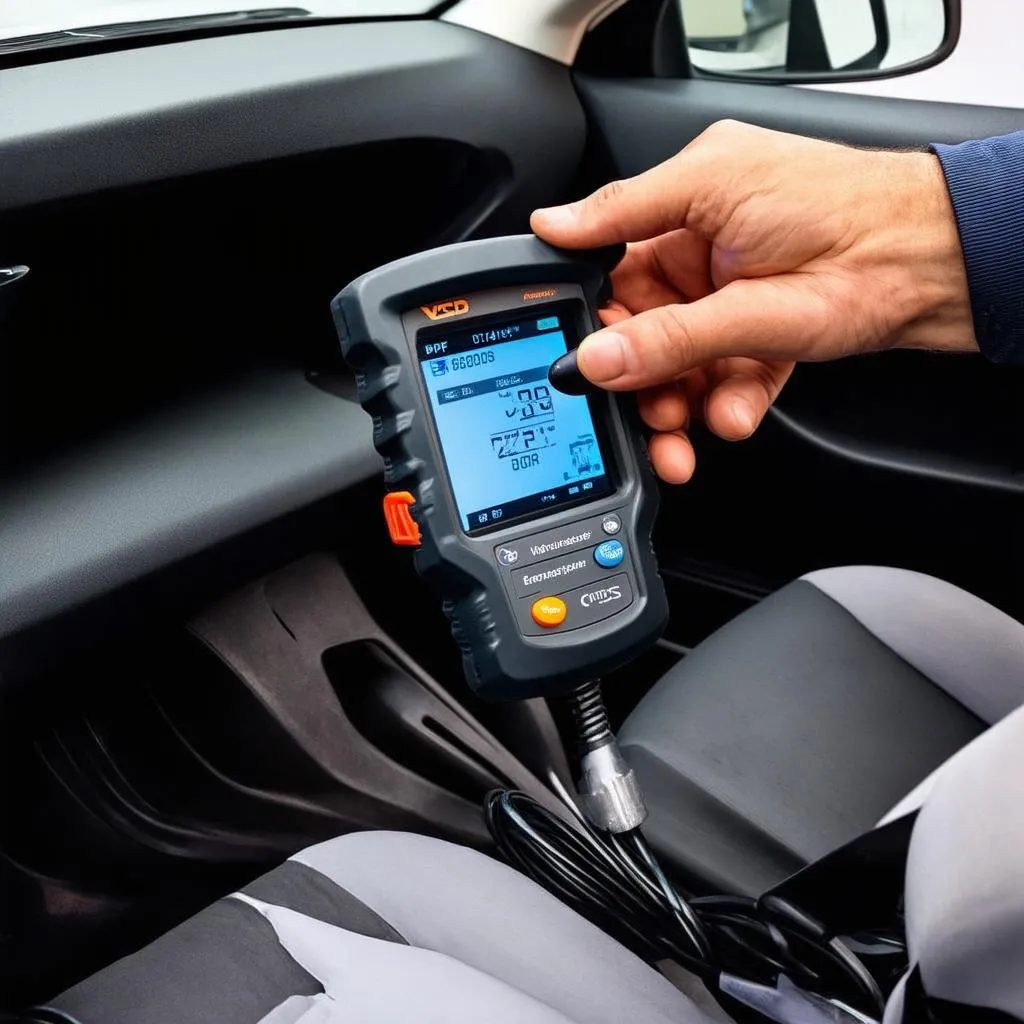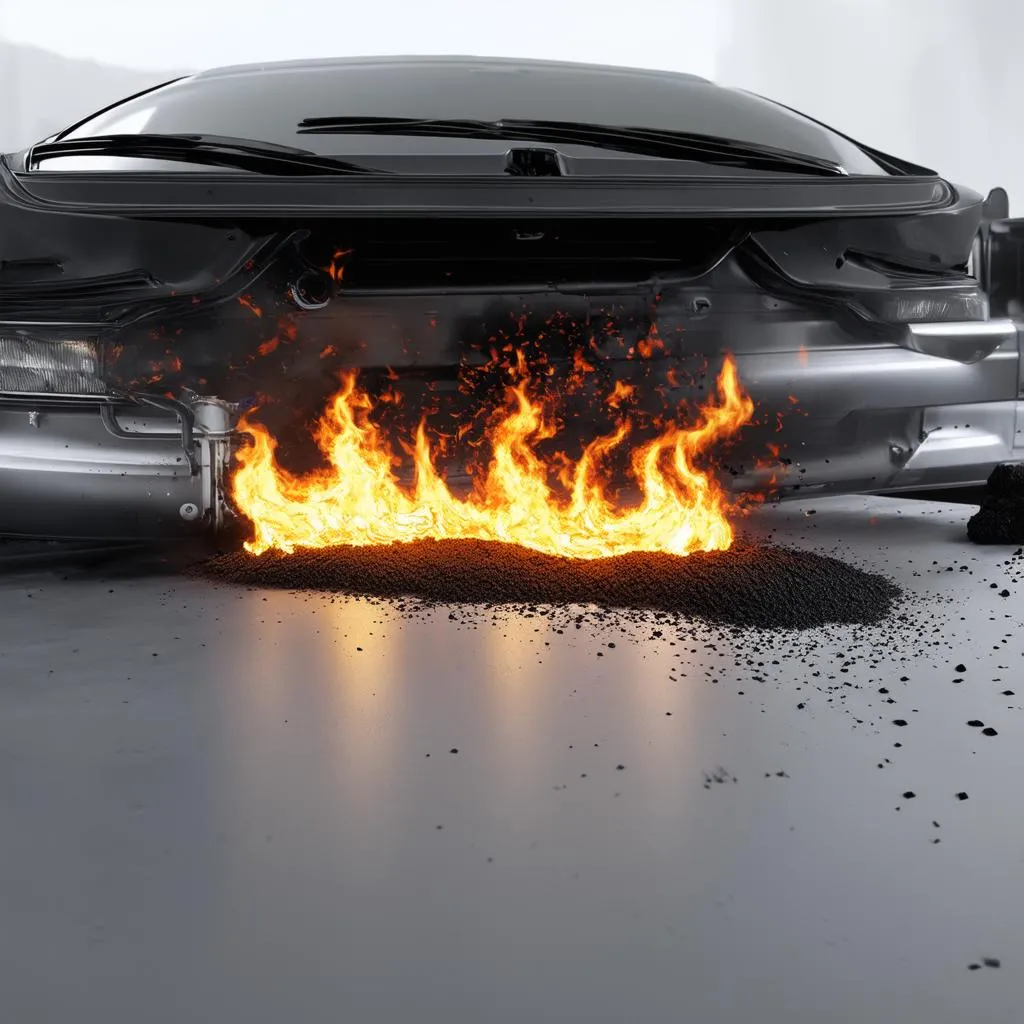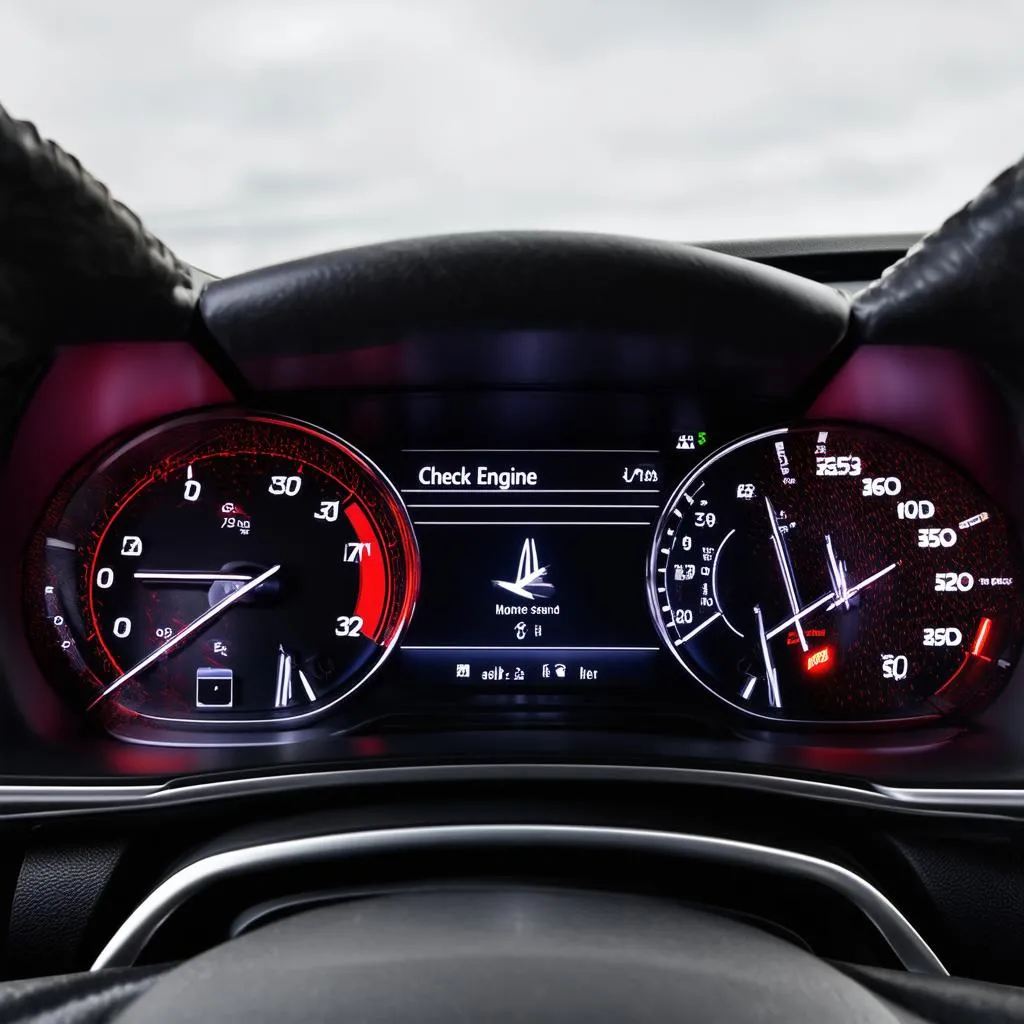DPF Regeneration Using VCDS: A Comprehensive Guide for European Car Owners
“The wheels on the bus go round and round…” – a common rhyme that everyone knows. But what about the wheels on your car? What if they start to go round and round, but something is not quite right? What if the engine starts to sputter, the car loses power, and your fuel economy plummets? You might be facing a problem with your diesel particulate filter (DPF), a crucial component in modern diesel vehicles designed to capture and reduce harmful soot emissions.
Understanding DPF Regeneration and VCDS
Think of your DPF as a small, intricate filter that traps soot particles from your engine’s exhaust. Over time, this filter can get clogged with soot, leading to reduced engine performance, increased fuel consumption, and even the dreaded “check engine” light on your dashboard.
Now, enter the mighty VCDS – short for “Vehicle Diagnostics, Controls, and Service” – a powerful diagnostic tool used by technicians to access and control various functions within your car’s electronic systems. VCDS is particularly useful for European vehicles, as it allows you to monitor and control various aspects of the DPF regeneration process.
But what is DPF regeneration? It’s essentially a process where the car’s engine heats up the DPF to burn off the accumulated soot, restoring its functionality. This regeneration happens automatically under certain conditions, like driving at highway speeds, but sometimes manual intervention through tools like VCDS is required.
Why Use VCDS for DPF Regeneration?
The Importance of Proper DPF Regeneration
Think of the DPF as the lungs of your car. A healthy DPF ensures efficient combustion and optimal performance. When the DPF gets clogged, it’s like having a lung full of soot, making it difficult for the engine to breathe. This can lead to various issues, including:
- Reduced Engine Power
- Increased Fuel Consumption
- Reduced Engine Efficiency
- Increased Emissions
- Potential Engine Damage
VCDS: Your DPF Regeneration Powerhouse
So, why is VCDS so useful in DPF regeneration? It offers you a powerful set of tools to:
- Monitor DPF Status: Access detailed information about your DPF’s current condition, including the soot load, pressure readings, and regeneration status.
- Force Regeneration: Manually initiate the DPF regeneration process to clean the filter efficiently.
- Diagnose DPF Errors: Detect and troubleshoot any potential DPF-related issues using advanced diagnostic codes.
- Reset DPF Counters: Clear the DPF’s regeneration counter, ensuring smooth operation after a successful regeneration.
The “Spiritual” Connection with DPF Regeneration
Some might see DPF regeneration as a complex mechanical process, but it’s also a fascinating interaction between technology and nature. The act of burning soot to cleanse the filter echoes the ancient tradition of purification through fire, often found in spiritual practices across cultures.
Just as fire transforms and purifies matter, the DPF regeneration process essentially transforms the harmful soot back into harmless gases, restoring the health of your car’s “lungs.”
Common User Queries and Their Solutions
Q: How do I know when my DPF needs regeneration?
A: Keep an eye out for these telltale signs:
- “Check Engine” Light: This is a clear indication that something is wrong with the DPF.
- Reduced Power: The car might feel sluggish or hesitate when accelerating.
- Increased Fuel Consumption: You’ll notice a drop in your fuel economy.
- Smoke from the Exhaust: You might see excessive black smoke coming from the tailpipe.
Q: Is it safe to force DPF regeneration using VCDS?
A: Generally, forcing DPF regeneration through VCDS is a safe process when done correctly. However, it’s essential to follow the proper instructions and ensure that the vehicle is in suitable conditions for regeneration. It’s advisable to consult a trusted mechanic if you’re unsure about the process or encounter any issues.
Q: What if my DPF regeneration fails?
A: If the DPF regeneration process fails, it could indicate several potential issues:
- Clogged DPF: The filter might be too heavily clogged to be cleaned effectively.
- Sensor Malfunction: A faulty DPF sensor could be preventing the system from working properly.
- Engine Problems: Underlying engine issues could be affecting the DPF’s performance.
If you face a failed regeneration, it’s best to consult a mechanic for diagnosis and repair.
DPF Regeneration Using VCDS: A Step-by-Step Guide
This section provides a general overview of the DPF regeneration process using VCDS. Please note that specific steps may vary depending on the vehicle model and VCDS version.
1. Connect VCDS to the Vehicle: Use a compatible VCDS cable to connect your laptop or tablet to the vehicle’s diagnostic port.
2. Select Vehicle Information: Identify your vehicle’s make, model, and year using the VCDS software.
3. Access DPF Settings: Navigate to the relevant DPF control module within the VCDS software.
4. Monitor DPF Status: Check the DPF soot load, pressure readings, and regeneration status using VCDS’s monitoring tools.
5. Initiate Forced Regeneration: If the DPF soot load is high, use VCDS to initiate a forced regeneration. This usually involves selecting a specific function or code related to DPF regeneration.
6. Monitor the Regeneration Process: Closely observe the DPF’s status and regeneration progress using VCDS’s monitoring tools.
7. Complete Regeneration: Allow the regeneration process to complete, ensuring the DPF is properly cleaned.
8. Reset DPF Counters: Once the regeneration is complete, use VCDS to reset the DPF counters, signaling to the system that the DPF is clean and functional.
Note: It’s crucial to ensure that the vehicle is stationary and the engine is running during the regeneration process. It’s also recommended to follow the manufacturer’s instructions and consult a mechanic if you have any doubts or concerns.
Related Articles and Resources
To delve deeper into DPF regeneration and VCDS, check out these related articles on our website:
- VCDS DPF Reset: Learn about the process of resetting the DPF counters using VCDS.
- Verificare DPF VCDS: Explore the functionalities of VCDS for monitoring and diagnosing your DPF.
- VCDS Service Regeneration of Particulate Filter While Driving: Discover the benefits of forced DPF regeneration while driving.
Call to Action
Facing DPF issues? Let our team of experts help you regain control of your car’s performance! Contact us via Whatsapp: +84767531508 for immediate assistance with your DPF regeneration needs. We offer 24/7 support and expert guidance on using VCDS and other diagnostic tools.
Conclusion
DPF regeneration is an essential process for maintaining the health and efficiency of modern diesel vehicles. Using a diagnostic tool like VCDS empowers you to monitor, control, and troubleshoot your DPF system effectively. By understanding the principles of DPF regeneration and utilizing the right tools, you can ensure that your car’s “lungs” stay clean and healthy, contributing to both environmental protection and smooth driving performance.
Let us know your thoughts in the comments below! Share your experiences with DPF regeneration and VCDS, or ask any further questions you might have.
 VCDS Tool
VCDS Tool
 DPF Regeneration
DPF Regeneration
 Car Dashboard
Car Dashboard
